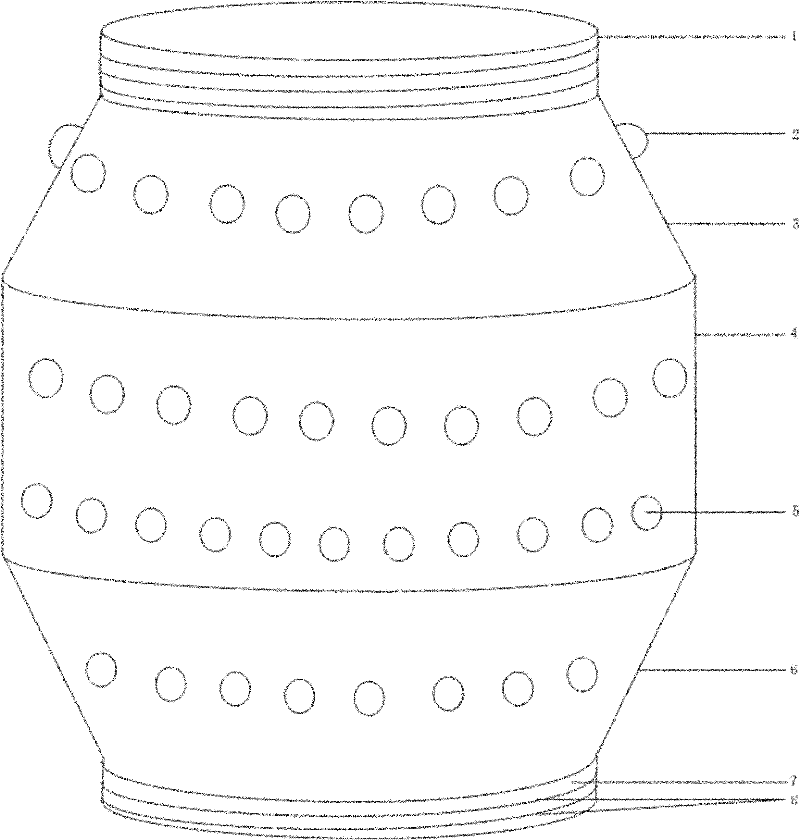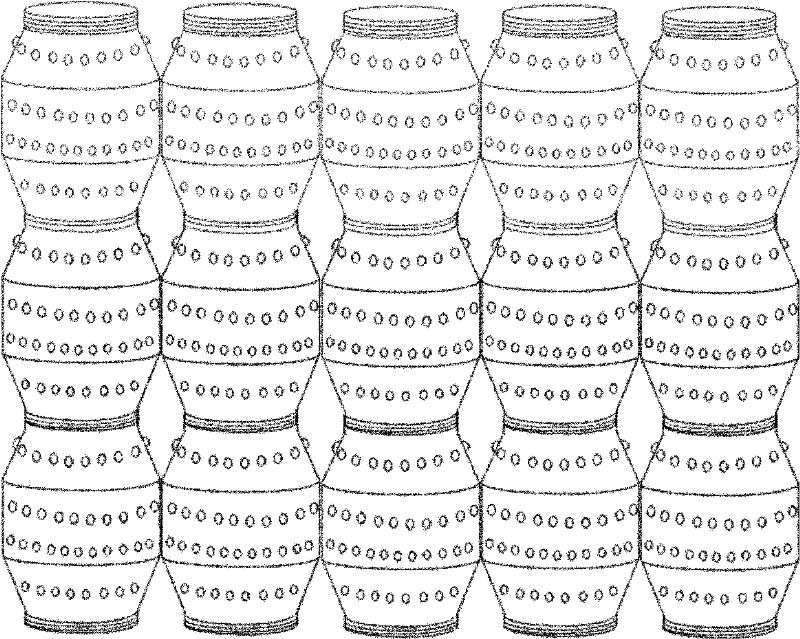Method for catching and transporting Octopus vulgaris
A method of transportation and technology of real octopus, which is applied in fish farming, application, climate change adaptation, etc., can solve the problems of low survival rate and high damage, achieve the effects of reducing mortality and damage rate, strong operability, and avoiding friction and fighting
- Summary
- Abstract
- Description
- Claims
- Application Information
AI Technical Summary
Problems solved by technology
Method used
Image
Examples
Embodiment 1
[0026] On April 21, 2010, 50 octopus were transported from Lianjiang, Fujian, weighing 341-903g, 30 large-size shipping containers with a height of 34cm and 20 small-size shipping containers with a height of 25cm were selected. Soak the shipping container with bleaching powder one day in advance, with a dosage of 10 grams per cubic meter of water, and rinse with clean water three times the next day. Use a fishing net to remove the true octopus from the pool and immediately put it into the transport container, take another container and rotate it through the thread of the bottom 7 to the thread of the front opening 1 where the true octopus container has been placed. Three large-size shipping containers with a height of 34cm are stacked vertically, and four small-size shipping containers with a height of 25cm are stacked vertically. The front opening of the uppermost shipping container 1 is covered with a lid with a round hole, the size of the hole It is 1.0~1.5cm, and the hole s...
Embodiment 2
[0028] On May 25, 2010, 105 octopus were transported from Fujian Province using live fish carts. 45 large-size shipping containers with a height of 34cm and 60 small-size shipping containers with a height of 25cm were selected. Soak the transport device with bleach one day in advance, and rinse three times with clean water after scrubbing the next day. Use a fishing net to remove the true octopus from the pool and immediately put it into the transport container, take another transport device and rotate it through the bottom thread to the open end thread where the true octopus device has been placed. Three large-size shipping containers with a height of 34cm are stacked vertically together, and four small-size shipping containers with a height of 25cm are stacked vertically together. The front opening of the uppermost transport device is a lid with a round hole on the end cover. Combine the above The devices are tightly arranged in the transport vehicle, and the handle 2 of the ...
Embodiment 3
[0030] On October 16, 2009, 64 real octopuses were transported from Fujian in a live fish cart. Four glass fiber reinforced plastic devices with a diameter of 1.3m are used, and each device is placed with 16 true octopuses, which are fastened with nylon mesh. Each cube of water has an average distribution of 46 true octopus. The salinity of seawater is 30 to 34, that is, seawater that is directly extracted from the sea without adjusting the salinity is used. Pour water to the upper edge of the device. Add ice during transportation and keep the water temperature at 7-9℃. At the destination, there was a lot of ink in the water in the glass device. The vitality of the octopus was weak. Only 23 survived, with a survival rate of 35.94%. The skins of the surviving individuals were mostly damaged and some limbs were mutilated. It can be seen from Table 1 that the two transportations in 2010 used transportation devices, and the salinity and temperature of the transportation seawater...
PUM
 Login to View More
Login to View More Abstract
Description
Claims
Application Information
 Login to View More
Login to View More - R&D
- Intellectual Property
- Life Sciences
- Materials
- Tech Scout
- Unparalleled Data Quality
- Higher Quality Content
- 60% Fewer Hallucinations
Browse by: Latest US Patents, China's latest patents, Technical Efficacy Thesaurus, Application Domain, Technology Topic, Popular Technical Reports.
© 2025 PatSnap. All rights reserved.Legal|Privacy policy|Modern Slavery Act Transparency Statement|Sitemap|About US| Contact US: help@patsnap.com



